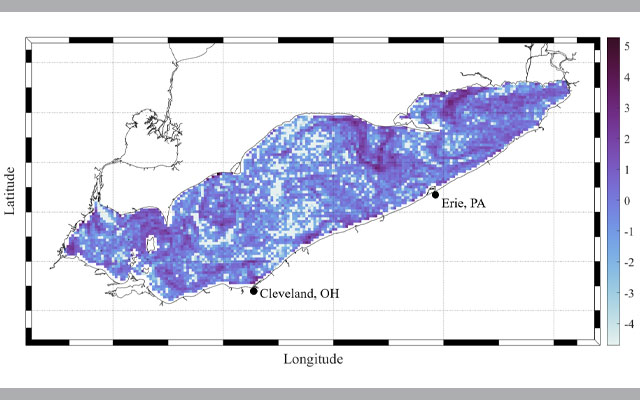
Supercomputer Simulations Help Create 3-D Models of Fresh Water Plastic Pollution
Penn State, RIT researchers create first-ever 3D mass estimate of plastic in Lake Erie
By:
- Kimberly Mann Bruch
Media Contact:
- Kimberly Mann Bruch - kbruch@ucsd.edu
- Jan Zverina - jzverina@sdsc.edu
Published Date
By:
- Kimberly Mann Bruch
Share This:
Article Content
The transport of nine types of plastics floating in Lake Erie was modeled in two studies that used the Comet supercomputer, at the San Diego Supercomputer Center (SDSC) at the University of California San Diego, to compare a two-dimensional model with a new Great Lakes microplastic dataset and then develop the first ever three-dimensional mass estimate for plastic in Lake Erie.
The studies were recently published in Marine Pollution Bulletin and the Journal of Great Lakes Research by researchers from Pennsylvania State University at Behrend and the Rochester Institute of Technology (RIT).
“Comet allowed us to run three years of hydrodynamic simulations of Lake Erie that drive the transport of plastic particles within Lake Erie,” said Matthew Hoffman, an RIT associate professor of mathematical sciences. “We don’t have the computing infrastructure at my university to run these simulations efficiently, so having access to Comet enabled us to run state-of-the-art code that is not possible on our local desktops and laptops.”
Hoffman worked with Penn State-Behrend Chemistry Professor Sherri Mason, who led the collection of the sampling data that the modeling simulated. Mason’s laboratory, which is located on the edge of Lake Erie, made sampling quite convenient.
“Undergraduate students were heavily involved in this process,” added Mason. “We used three different vessels (Niagara, Sea Dragon, and Sara B) to collect our samples, taking advantage of every opportunity afforded to us. We would hop aboard, collect our samples, then take them back to the lab for analysis. Such fieldwork is important to better understand how plastic is not only impacting our lake, but freshwater lakes around the world.”
The nine plastics involved with the study were polystyrene (PS), polyamide (PA; nylon), polymethylene methacrylate (PMMA; acrylic), polyethylene terephthalate (PET; polyester), polyoxymethylene (POM), polyvinyl chloride (PVC), polyethylene (PE), polypropylene (PP), and expanded polystyrene (EPS).
This research was funded by The Burning River Foundation. Researchers were provided access to Comet via the National Science Foundation’s Extreme Science and Engineering Discovery Environment (XSEDE) program under allocation TG-OCE150006.
Share This:
You May Also Like
Stay in the Know
Keep up with all the latest from UC San Diego. Subscribe to the newsletter today.



